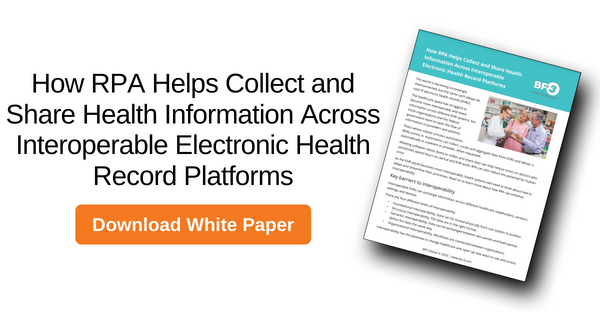The world is becoming increasingly interconnected, but the same can’t always be said of electronic health records (EHRs).
The healthcare space has struggled to become more interoperable and share information across different EHR systems, but more organizations and the federal government want to open the flow of information to providers and patients.
That’s where robotic process automation (RPA) comes in. Automation can collect, curate and aggregate data from EHRs and deliver it automatically to a patient or provider, when requested.
Allowing software robots (bots) to collect and share data can help reduce stress on doctors who sometimes spend hours on clerical and EHR work. RPA can also reduce the potential for human error.
As the EHR world becomes more interoperable, health systems will need to think about how to adapt and streamline their processes. Stay tuned for weekly blog posts as we explore how RPA can enhance interoperability or read our white paper today!

